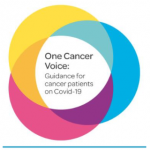An update from brainstrust
We enter these uncertain times with our founding principles of people first, and community. We are aware of the vulnerable place that people living with a brain tumour are in. We are following government advice closely, and quickly. Our team have come together incredibly, pledging to each other to be fair, flexible, and prepared. Late last night we closed our offices indefinitely for the protection of those around us. But our team of 14 is already working from home offices across the UK. Our mission? To stay fit and well so that we can be invaluable to our friends and families that need us, and invaluable to the people that so desperately need brainstrust’s help as they are advised to shut their doors to the outside world.
Now is a time for us to reach out, but in new ways. We are working tirelessly to ensure that people with a brain tumour and their loved ones are supported in these uncertain times. We are cancelling all of our patient and caregiver events in public spaces, initially for 6 weeks, but we are opening our doors online even wider.
If you have any concerns about your health, coronavirus and cancer, talk to your clinical team or read the NHS advice here. You can read our joint statement with the other UK brain tumour charities here. and please, keep reading these updates and follow our social media updates as things unfold.
This is a new one for all of us, and we hope that you stay safe and well. We’re here if you need us, while we have the funds to be – your support when you are able will be more valuable than it has ever been before.
Our support won’t stop
“We know at brainstrust how important community is, ever more so in this climate when we are being asked to isolate. We know that when you are preparing for tough times it doesn’t mean closing the door – it means reaching out.”
Helen Bulbeck, director of services and co-founder of brainstrust
In light of our events being postponed, we have doubled down on our efforts to reach you online:
As of 17 March 2020: Due to government advice, we are cancelling all of our patient and caregiver events in public spaces, initially for 6 weeks, but we are opening our doors online even wider. In light of our events being postponed, we have doubled down on our efforts to reach you online:
- We will be running virtual meetups and webinars covering topics we know are important to you – keep an eye on our social channels for updates.
- Book a coaching call or drop your support specialist an email. Coaching can be vital in this time of uncertainty to help you navigate your ‘new’ normal. Click here to email Helen, Jane, Jodie, Carol or Khadijha.
- We are regularly uploading new information onto our website for people with a brain tumour. Read our existing Know Hows, and look for new arrivals here.
- Our Facebook community has over 2,500 members and is a welcoming, confidential and supportive space that is thriving and full of relevant and useful conversations.
Fundraising and your support
We always put the well-being of our community of patients, caregivers and supporters first. Following government advice, we have been preparing for the inevitable event postponements as much as possible. As you are probably already aware a large number of immediate sports and challenge events have already been delayed.
If your fundraising challenge is postponed, it is vital that you don’t lose heart. Please continue your fundraising efforts when you are able to, events will be rearranged once the current situation is under control, giving you longer to reach and beat your fundraising goals. In times like these, our vulnerable community needs our support more than ever, so please continue to support us, so that we can support them.
This is a new situation for all of us, and we hope that you stay safe and well. Tom Cowie, Head of Income, brainstrust





